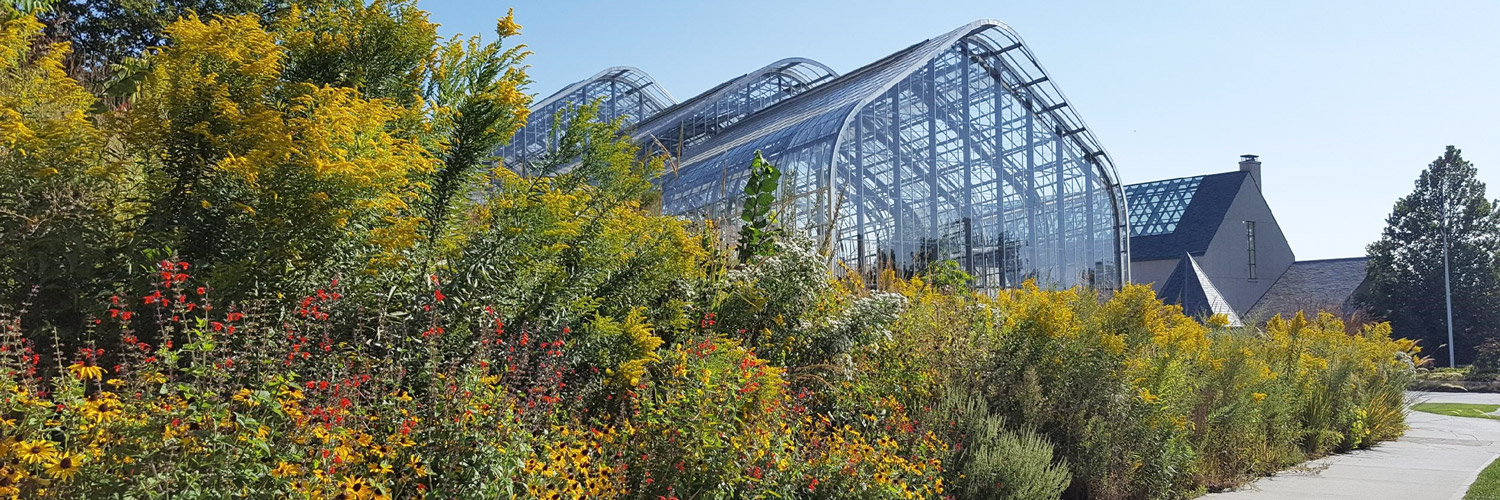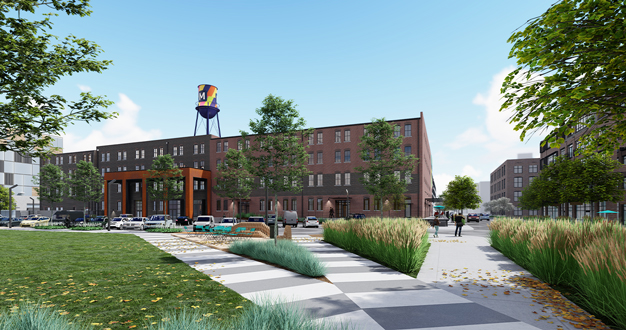
Biophilic cities. It’s a growing worldwide trend – one that brings enormous benefits, and we’re excited to see it taking hold right here in Omaha and our neighboring cities. With an increasing appreciation for green spaces, coupled with growing environmental awareness, city planners and private organizations are incorporating more of the natural world into many urban spaces.
Here, we share about the benefits of biophilic design with a few examples from our local communities – including an exciting new project in North Downtown Omaha.
Cover photo by Lauritzen Gardens

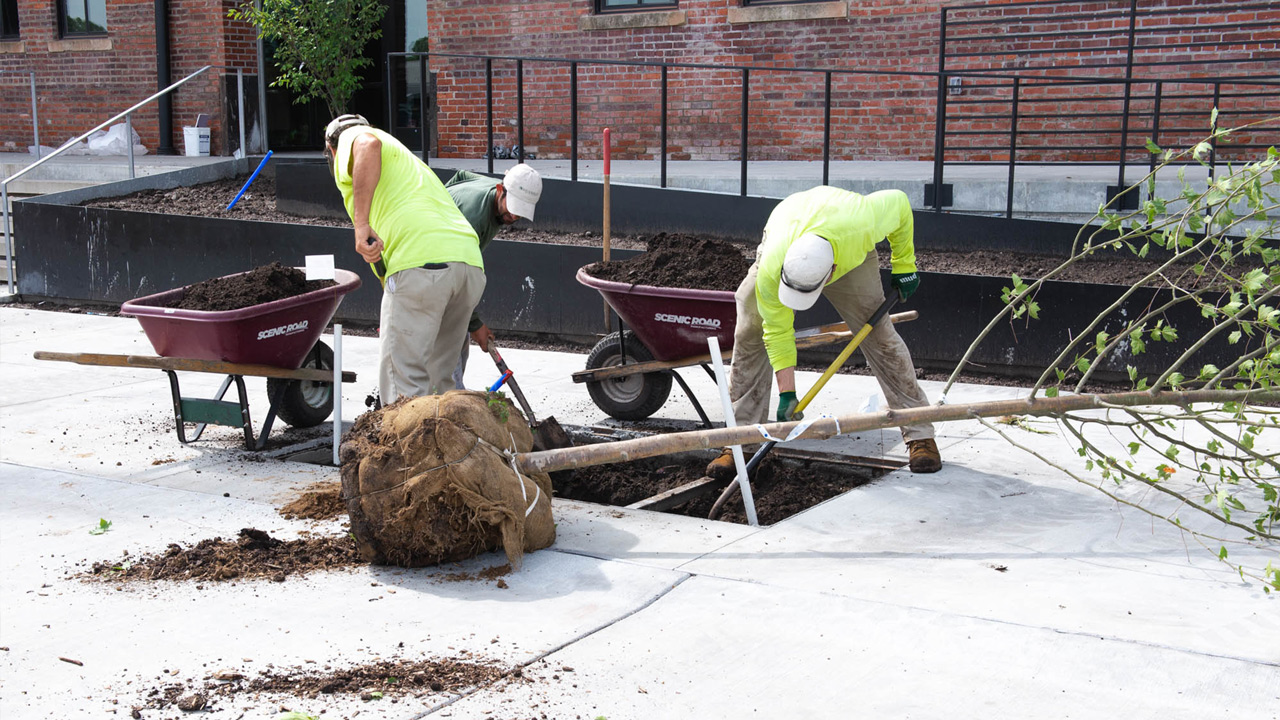
Biophilic Design
The literal definition of biophilia is “a love of life and the living world.” The term was popularized in 1984 by E.O. Wilson, who argued that at the core of our humanity is an innate love for the natural world, which connects us to all other living species.
A biophilic approach to urban landscapes acknowledges the benefits that come from incorporating the natural world into our built spaces. Research has repeatedly shown that urban plantings and natural spaces add value far beyond the cost of installing them. Green spaces can help reduce stress and encourage exercise. They create positive feelings about the community and improve our perception of local businesses. They increase property values, attract visitors, and even help reduce crime. Plants also cool the local microclimate, capture carbon monoxide, and trap contaminants and pesticides before they run off into our natural waterways. And landscapes that mimic or preserve natural ecosystems also support local birds, pollinators, and other biodiversity.
Bringing nature back to the city is a vital part of building a stronger, more sustainable community for the future. And seeing that here in Omaha and our neighboring cities brings a lot of hope.
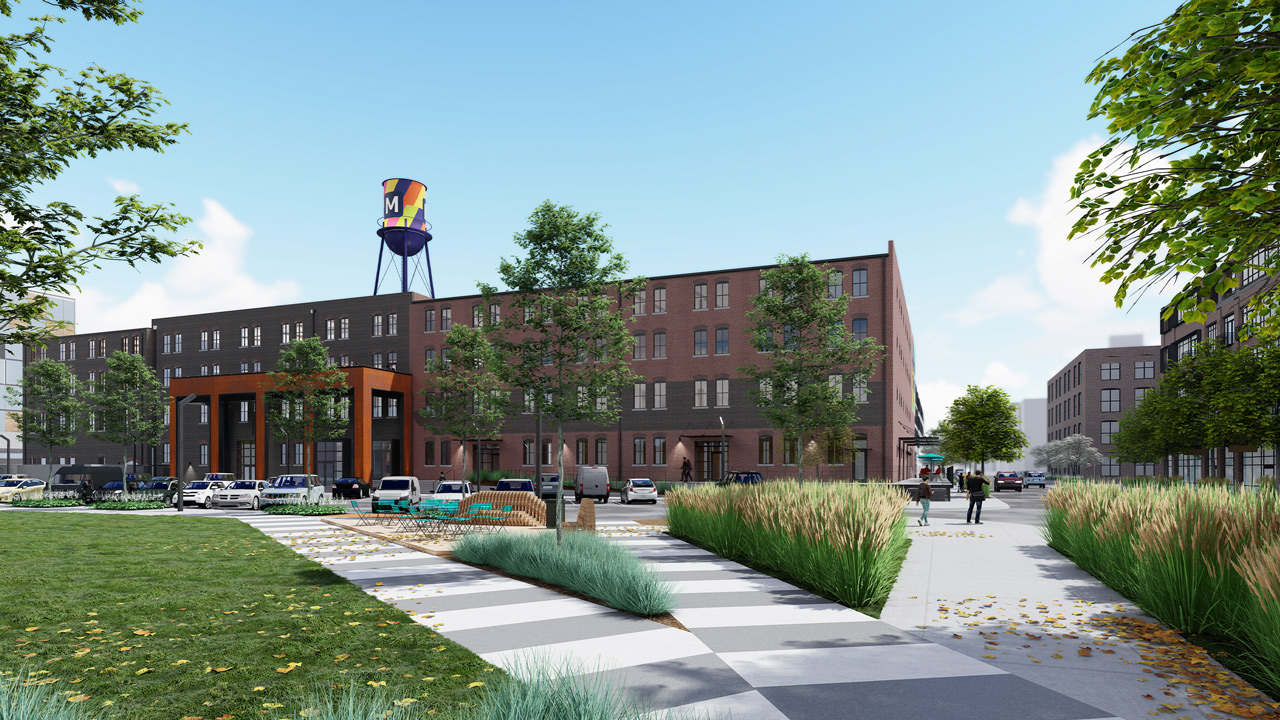
Photo by Alley Poyner Macchietto Architecture
Millwork Commons
In a new revitalization project in North Downtown Omaha, plantings inspired by our local, natural landscapes will play a key part in the design. And we’re excited to be a part of it. The project – led by Black Dog Management in partnership with Alley Poyner Macchietto Architecture and Olsson, Inc. – covers fifty acres near 13th and Nicholas Streets and will offer a pedestrian-friendly space for today’s visionaries in art, technology, and design, with a diverse mix of housing, businesses, and green spaces.
Architect Megan Lutz says one of the project’s goals is to use green infrastructure to help meet their community ideals – sustainability, walkability, cohesiveness, and safety. Plantings of trees, shrubs, and perennials will provide shade for gathering places, define and beautify walkways, calm traffic and dampen its noise, and serve as natural stormwater mitigation.
Before redevelopment, the plant community around this historic area has been independent – untethered. Even a bit unruly. Inspired by this spirit of the place, the new design reflects a less manicured look with plantings mostly composed of native plants – such as Kentucky coffeetree, serviceberry, ninebark, dogwood, coneflower, black-eyed Susan, and blue grama grass.
As part of the earliest stages of the project, our team is helping with an extreme approach to urban tree-planting along the north side of the historic Ashton Building. Using a special underground system that supports stronger root growth, the goal is to make sure these shade trees live a long, healthy life.
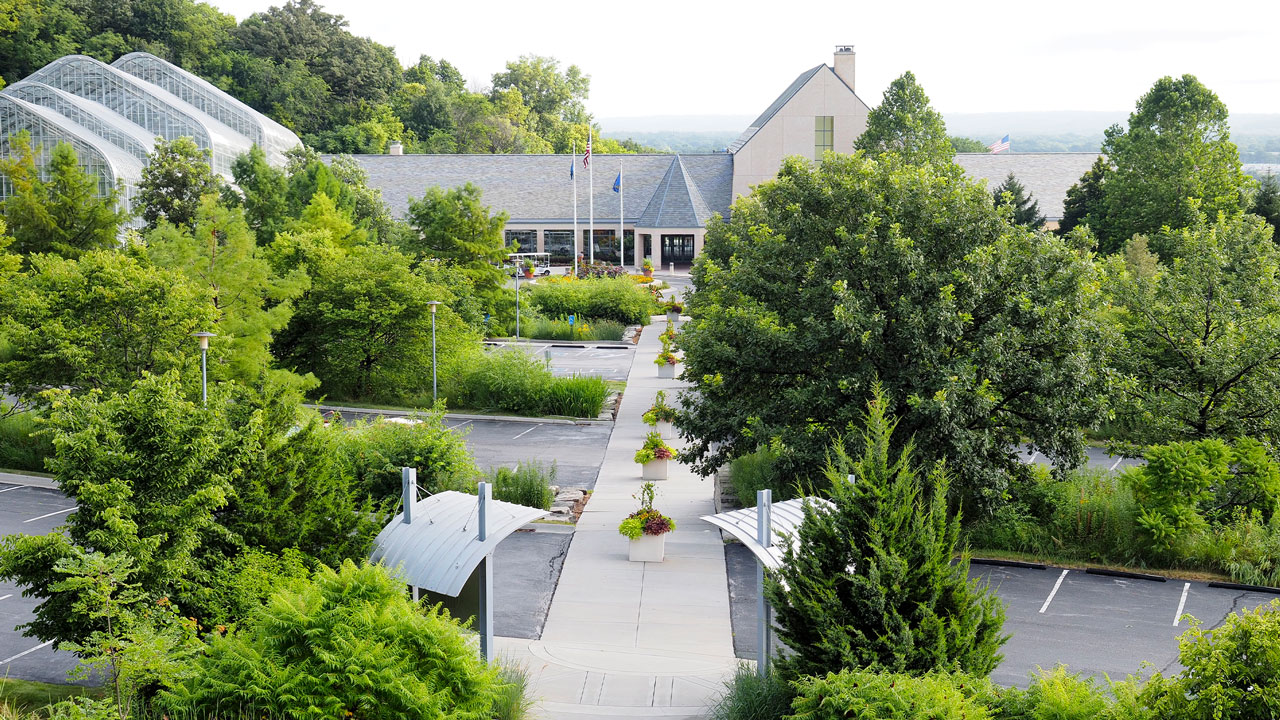
Photo by Lauritzen Gardens
Lauritzen Gardens
You may have already enjoyed another impressive biophilic design the last time you visited the parking garden at Lauritzen Gardens. There, native trees, grasses, and perennials both shade and screen the view of hundreds of parked cars along the hillside. Within this landscape, you’ll also find streams and ponds that showcase a community of aquatic plants as well as redirect and filter stormwater before it runs off the property.
Tom Hanafan River’s Edge Park
For another impressive biophilic design, the beautiful Tom Hanafan River’s Edge Park in Council Bluffs offers space for large community events, while also preserving and restoring important riparian floodplain habitat. Visitors can walk along forested paths, see diverse plantings of native plants, visit a riverside sand beach, and enjoy play areas too. And the intentional inclusion of water-friendly features like porous pavement, bioswales, and rain gardens mean the entire area is designed to withstand inevitable periodic floods from the mighty Missouri River.
Clean Solutions for Omaha Sites
Through the Clean Solutions for Omaha program, several bioremediation sites across the city are designed to separate and redirect stormwater to more natural destinations and keep it from overwhelming the city’s sewer system. In each case, green infrastructure like rain gardens, lagoons, terraced bioretention gardens, and wetlands not only help manage stormwater but also create engaging parks with more natural spaces for the community and local wildlife to enjoy. Some of these sites include Fontenelle Park, Elmwood Park, Spring Lake Park, and more.

Photo by OJB Landscape Architecture
Omaha RiverFront
Right in the heart of Omaha, a multi-stage revitalization project plans to connect Gene Leahy Mall, Heartland of America Park, and Lewis & Clark Landing in one cohesive vision that draws together elements from three local ecosystems – riparian, eastern deciduous forest, and prairie. The new design includes a mix of built features – walkways, seating, play areas, and event spaces – with native trees, shrubs, grasses, and perennials for a space connecting both people and the natural environment.
Antelope Creek + Union Plaza
Our neighbors in Lincoln have also enjoyed the dramatic renovations of Antelope Creek, which have resulted in improved flood control as well as new bike trails, walkways, natural play areas, fountains, and a space for community events. Along the creek and walkways, visitors can enjoy plantings of native grasses and wildflowers reflecting the natural, local landscape.

Help Us Build a More Biophilic City
It’s exciting to see these largescale projects help bridge the gap between natural ecosystems and city streets. But biophilic design can take place anywhere and on any scale. You can even create your own biophilic landscape – every little spot contributes in welcoming nature back to our city. And if you have questions – just stop by or call. We’d love to help you welcome and enjoy the natural world right in your own beautiful backyard.

